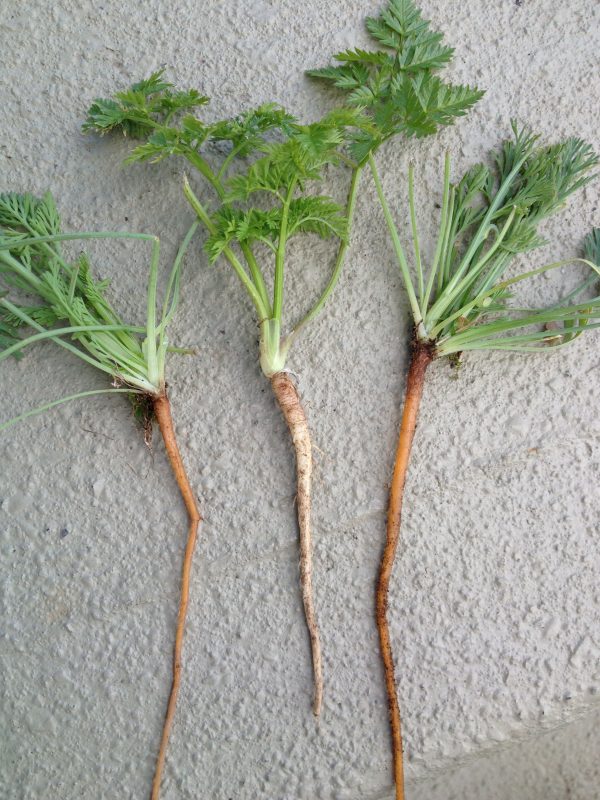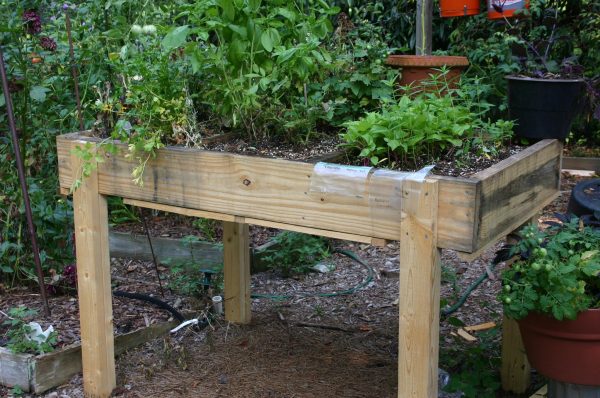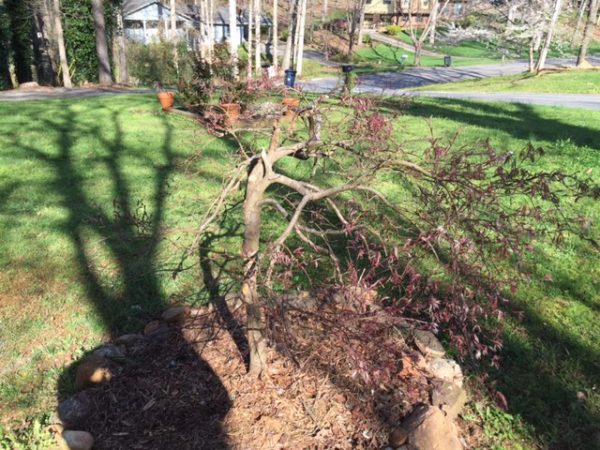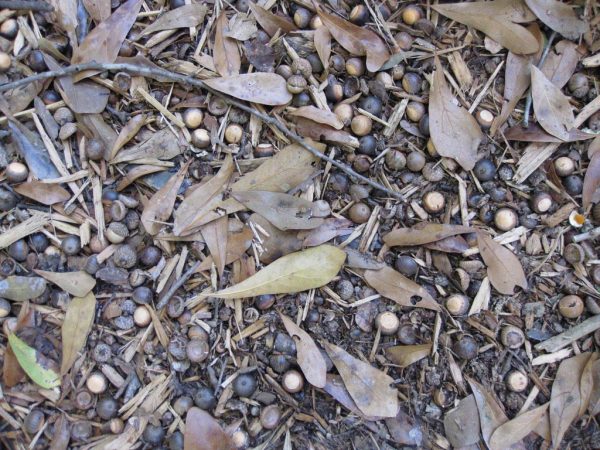Carrot

Daucus carota var. sativas
These vegetables with their bright orange roots may not appeal to the youngest family member as part of a favorite meal-or any meal for that matter. It seems that early peoples may have shared the youngster’s sentiment.
• More detailed information can be found in The Georgia Fruit & Vegetable Book by Walter Reeves and Felder Rushing
• See also:
The ancients probably cultivated carrots but not as a common food plant. Carrots have managed to gain popularity for a lot of folks since those early days. Most of the modern varieties come from those developed in France in the early 1800s.
WHEN TO PLANT
A freeze will not harm carrots. Sow seeds in mid-to-late winter, or just as soon as the soil is workable (experienced gardeners always have a row or two ready from fall for planting early vegetables). To provide a continuous supply of carrots, sow seeds every 2 to 3 weeks. To produce carrots in the fall, sow seeds in midsummer and keep moist.
WHERE TO PLANT
These roots require deeply prepared, well-drained soil. The long varieties of carrots prefer sandy soils, and the shorter or half-long varieties produce the best quality in gardens with heavy soils. Carrots will grow in soils with a wide range of acidity or alkalinity. Do not apply lime or gypsum to garden soils unless you have tested them to make sure the added calcium is needed. A high level of soil potassium is essential for good root development. Give carrots a full-sun location (8 to 10 hours will suffice), and they’ll give you a bountiful crop.
HOW TO PLANT
Apply a complete garden fertilizer, such as 10-10-10, at a rate of 1 1/2 pounds per 100 square feet of garden. Work the soil into a fine seedbed (that is, make sure the soil is finely broken up) to promote germination. Poor germination will result when the soil is not well prepared. For rows, sow carrot seeds about 3 per inch, and allow 12 to 15 inches between rows. For a raised bed, sow the rows 8 to 10 inches apart across the bed. For both methods, cover the seeds with 1/4 inch of fine soil. For seeds sown in the summer, place a board over each row to keep the soil from drying or from being compacted by pounding rain. Check the board twice daily to see whether the seedlings have begun to emerge, and remove the board as soon as you notice any of them. When the seedlings are large enough to handle, thin them to 1 plant every 2 inches.
CARE AND MAINTENANCE
A little hoeing or pulling of weeds, especially while the seedlings are small, will prevent weeds from competing with the carrots for water and nutrients. If no rain falls for 7 to 10 days, apply 1 inch of water. Carrots that develop in dry weather will be fibrous and woody. As for pests, soil-borne maggots may damage the roots. If they have been a problem in the past, mix an approved garden insecticide according to the directions on the label, and apply it to the furrows as you plant the seeds.
ADDITIONAL INFORMATION
Harvest the carrots when they are at least 1/2 inch in diameter. Carrots left in the ground will continue to increase in size. Under normal conditions, expect a spring seeding to produce for 3 or 4 weeks. Summer seedings for fall crops may be left in the ground until a killing frost or even later if you mulch them to keep the ground from freezing. Dig late-season carrots and store them in pits of sand or in boxes of sand in a cool place such as a garage. Keep them at just above freezing temperatures; don’t let them freeze. To prevent green shoulders that develop when the roots are exposed to light, cultivate a little loose soil over the roots as they begin to swell. Any green portions will be poorly flavored, so cut those portions off the roots before you use them. Poor soil preparation, which may include leaving stones and other debris in the soil, causes forked and twisted roots.
VARIETIES
Varieties
Days to Maturity
Comments
BABY
Little Finger
65
¬Ω-inch-diameter roots, 5 inches long, sweet and crisp
Short ‘n Sweet
68
4-inch-long roots, good in poor soils
DANVERS
Danvers Half Long
75
6- to 8-inch-long roots tapered to blunt ends
NANTES
Bolero
70
Hybrid, 7-inch-long roots tapered to blunt ends
Nantes Coreless
68
Red-orange, 6-inch roots
Scarlet Nantes
70
The standard for best quality, 6-inch-long roots, bright orange, sweet
REGULAR CHANTENAY
Red-Cored Chantenay
70
Good flavor, short, blunt roots, good in heavy soils
SMALL ROUND
Thumbelina
62
AAS; Excellent for poor or shallow soil and for containers

















